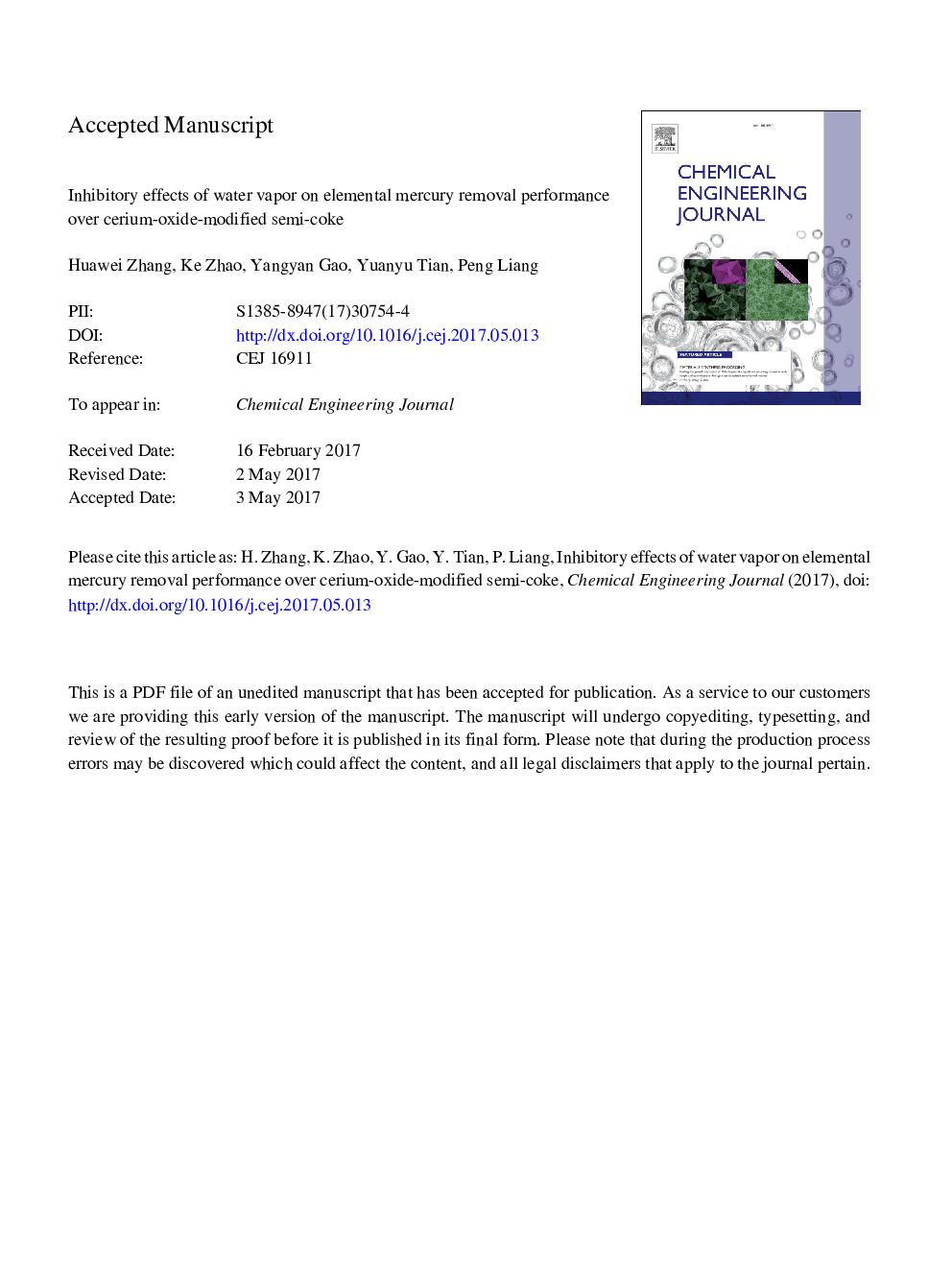| Article ID | Journal | Published Year | Pages | File Type |
|---|---|---|---|---|
| 4762976 | Chemical Engineering Journal | 2017 | 36 Pages |
Abstract
A fixed-bed reactor was used to study the effect of water vapor on the efficiency of Hg0 removal over CeO2-modified semi-coke. Adsorption experiments showed that the oxidation activity, and therefore, the mercury adsorption efficiency decreased with increasing water vapor concentrations. Hydrogen temperature-programmed reduction (H2-TPR) indicated that the oxidation activity of CeO2 decreased after water vapor treatment. Fourier-transform infrared (FT-IR) studies revealed that CeO2-H2O showed new bending vibration peaks at 1110Â cmâ1 ascribed to Ce-OH groups. X-ray photoelectron spectroscopy (XPS) results showed that the content of Ce-OH increased from 20.85% to 39.99%, while the lattice oxygen content decreased from 68.21% to 45.83% after water vapor treatment. Density functional theory (DFT) calculations revealed that H2O can be dissociated on clean and oxygen-defective CeO2(1Â 1Â 1) surfaces to form H atoms and OH fragments. The H atoms associated with the adjacent oxygen atoms of CeO2, and the OH fragments were bound directly with Ce atoms to form Ce-OH for the clean CeO2 surface; or occupied the oxygen vacancies and were surrounded by three Ce atoms via van der Waals forces, without additional bond formation for the oxygen-defective CeO2 surface. Thus, the formation of Ce-OH groups and the consumption of lattice oxygens reduced the Hg0 removal efficiency.
Related Topics
Physical Sciences and Engineering
Chemical Engineering
Chemical Engineering (General)
Authors
Huawei Zhang, Ke Zhao, Yangyan Gao, Yuanyu Tian, Peng Liang,
